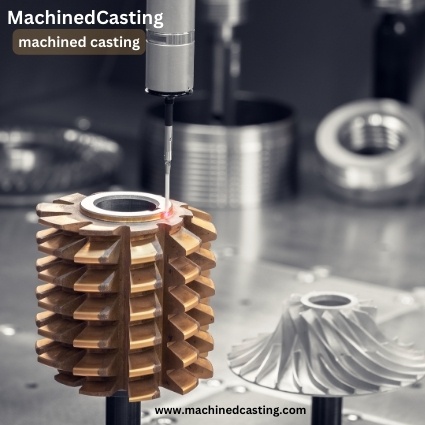Machined casting is a versatile manufacturing process that combines the flexibility of casting with the precision of machining. It involves pouring molten metal into a mold to create a part, which is then refined using machining techniques to achieve tight tolerances and intricate designs. This guide will walk you through the steps involved in machined casting, from design considerations to post-processing, highlighting key techniques and best practices along the way.
-
Design Considerations:
- Begin by identifying the functional requirements and constraints of the part.
- Design the part with features that facilitate the casting process, such as uniform wall thickness and smooth transitions.
- Incorporate draft angles to ease the removal of the part from the mold.
- Consider the material properties and select a suitable alloy for the intended application.
-
Pattern and Mold Making:
- Create a pattern of the desired part using materials like wood, plastic, or metal.
- Construct the mold from materials such as sand, plaster, or metal, depending on the complexity and volume of production.
- Ensure proper venting and gating to allow for the escape of gases and the smooth flow of molten metal into the mold cavity.
-
Casting Process:
- Preheat the mold to prevent thermal shock and promote better metal flow.
- Melt the chosen metal alloy in a furnace to the desired temperature.
- Pour the molten metal into the mold cavity carefully to avoid defects like air pockets or shrinkage.
- Allow the metal to solidify and cool within the mold.
-
Machining Operations:
- Once the casting has cooled, remove it from the mold and inspect for any defects.
- Use machining techniques such as milling, turning, drilling, and grinding to achieve the final dimensions and surface finish.
- Employ CNC (Computer Numerical Control) machining for complex geometries and high precision.
- Implement fixture designs to securely hold the casting during machining operations, ensuring accuracy and repeatability.
-
Quality Control:
- Perform dimensional inspection using precision measurement tools like calipers, micrometers, and CMMs (Coordinate Measuring Machines).
- Conduct non-destructive testing methods such as ultrasonic testing or X-ray inspection to detect internal defects.
- Implement statistical process control (SPC) techniques to monitor and optimize the casting and machining processes for consistency and quality.
-
Post-Processing and Finishing:
- Remove any remaining gating or excess material using sawing, grinding, or cutting operations.
- Deburr the part to remove sharp edges and surface imperfections.
- Apply surface treatments like painting, plating, or coating for enhanced aesthetics and corrosion resistance.
-
Environmental Considerations:
- Implement sustainable practices such as recycling scrap metal and minimizing waste generation.
- Ensure compliance with environmental regulations regarding emissions, wastewater management, and hazardous materials handling.
Conclusion: Machined casting offers a cost-effective solution for producing complex metal parts with high precision and excellent mechanical properties. By following the steps outlined in this guide and embracing best practices, manufacturers can harness the full potential of machined casting to meet the demands of diverse industries while minimizing lead times and maximizing efficiency.


No comments yet